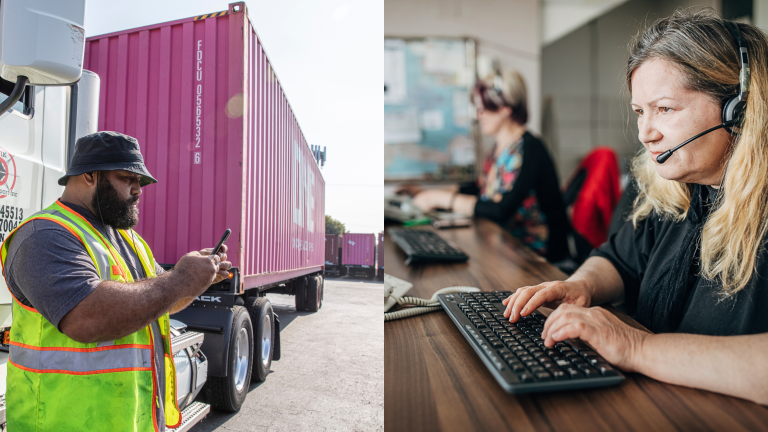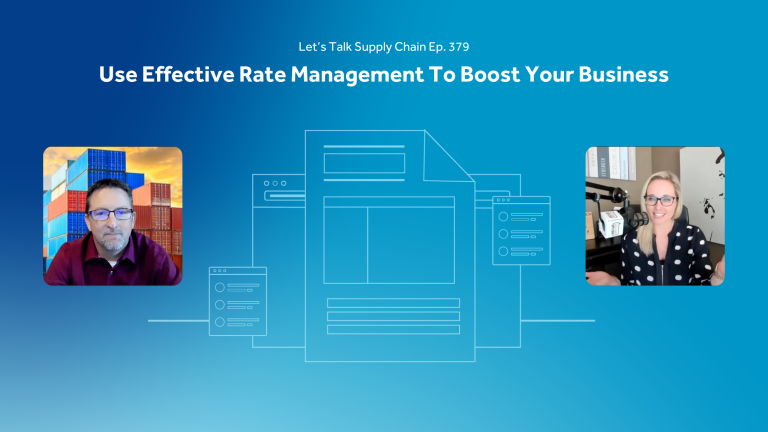We’ve provided an insiders look at some of the largest intermodal freight depots in the country, Chicago, Illinois and Los Angeles, California. This month, we’re discussing another intermodal powerhouse: Houston, Texas.
If you’ve been following along with us, then you know how we feel about intermodal freight transport. It’s time efficient, it’s flexible, and it’s often a cheaper solution to shipping freight nationally, as well as worldwide. In this article, we cover the ways the freight industry has shaped Houston’s economy, and discuss the potential complications you may encounter when shipping through Houston.
Facts About Intermodal Freight Transport in Houston
- Houston is the No. 1 foreign trading port in the U.S. by tonnage.
- Port Houston is the largest container port on the Gulf Coast.
- Port Houston is home to three Class 1 railways and 800 miles of rail lines.
- To date, Houston has handled almost $200 billion of shipments.
- The city of Houston gives access to seven major highways, four railways, two international airports, and six waterways.
- Port Houston handles approximately two-thirds of all containerized cargo in the U.S. Gulf of Mexico.
These statistics are directly sourced from the Greater Houston Partnership and the U.S. DOT FHA. For additional information about Port Houston, visit their website.
How Intermodal Freight Transport Benefits Houston
According to 2018 research, Port Houston has made a significant economic impact on not only the city of Houston, but Texas as a whole. Throughout Texas, the Houston Ship Channel has created over 1,350,695 jobs, generating more than $339 billion in economic value.
Port Houston is more than just an intermodal cash cow, though. The Houston Ship Channel also dedicates time and resources to improving its community through strategic partnerships, awareness projects, and investments. Port Houston offers boat tours, online feedback tools, event and program sponsorships, and more. You can learn more about their community outreach here.
As you can see, intermodal freight transport in Houston has quite the economic impact in Texas. But how might Houston’s intermodal system impact your operation?
Challenges with Intermodal Freight Transport in Houston
Limited Capacity – Much like many other intermodal hubs, Houston has experienced significant tightness, especially around the Port. Since Houston is normally a secondary market, congestion hasn’t always been an issue in comparison to primary markets like Chicago and New York City. This has allowed Houston to hold a surplus of containers and equipment that can then be passed on to other intermodal depots in need, such as Los Angeles.
However, due to recent tightness and congestion at the Port, Houston has had limited capacity, preventing them from having the surplus of containers they’ve had in the past. For those shipping into Houston, this congestion may not cause substantial complications. For those shipping through Houston, though, you may encounter some trouble.
This tightness is largely due to the increased amount of shipments going through Houston. In fact, through 2019, both imports and exports are up year-over-year in Houston. Imported TEUs are up 8.4 percent from 2018, while exported TEUs are up 15 percent — and these percentages are only expected to keep rising. With limited capacity as is, shippers can expect to not only experience tightness around Port Houston, but also in other intermodal depots around the nation.
Restrictions on Container Vessels – Even more of a concern are the recent restrictions on container vessels. Earlier this year, the state of Texas limited large container vessels to one-way traffic at Port Houston, meaning only one ship can reach the Port per week. Considering that Houston is the nation’s busiest hub for foreign trade, this may put a significant strain on shippers worldwide.
In addition, the Houston Ship Channel is limited in space. In order to accommodate for the growing number of exports, Port Houston needs a larger, and deeper, ship channel. Without it, the Port will continue to be limited to one-way traffic for ships with 8,000 TEU capacity or less. However, channel improvements are in the works to widen the Houston Ship Channel and therefore gain the capacity to handle ships up to 14,000 TEU in size.
While this is great news for exports, it may not be as helpful for imports if the Port is unable to maintain a balance between the two. If imports grow, Port Houston should be able to regain the surplus of containers and equipment it had previously, and alleviate tightness in Houston as well as Los Angeles.
Upcoming Freight Changes to Expect in Houston
Currently, Port Houston has 10 ongoing projects. These include the addition of rail at the Bayport Terminal, container yards in the Bayport and Barbour Terminals, upgrades to the wharf, and more. You can read more about their current projects here.
Over the next few years, the Port plans to significantly expand its infrastructure to accommodate larger vessels, as well as improve traffic and add additional container storage areas. Port security will also be improved by the addition of new gates and security systems. Additional lanes into the Port will also be added, allowing more inbound and outbound traffic to enter the Port.
While change is on its way to Houston, it’s going to take some time. In the meantime, you need solutions, and you need them fast. After all, you’ve got a job to do and you can’t allow limited capacity or restrictions on container vessels to stand in your way. If only there was a way to find storage for your containers and equipment at the click of a button… As it turns out, there is. And it’s called SecūrSpace.
Use the SecūrSpace Marketplace To Find Space in Houston
The next time you’re stuck with a delay, or need a place to store your shipment until it’s go-time, utilize the SecūrSpace Marketplace to find and book the space you need in the click of a button.
Our Partners in the Houston area — as well as across the country — have the available space you need, at the right price. We have streamlined the storage process, making it easier than ever to locate, access, and store equipment.
Step One: Create an account for your company and create your profile.
Step Two: Search our Partner listings by address, date range, and equipment type to find the perfect location.
Step Three: Select your location and book the space!
It’s as easy as that. Don’t let the complications of intermodal freight transport, specifically in Houston, slow you down. Use the SecurSpace storage solution to save time and money.
Editor’s note: This blog was originally written for SecurSpace, An Overview of Intermodal Freight Transport in Houston.




